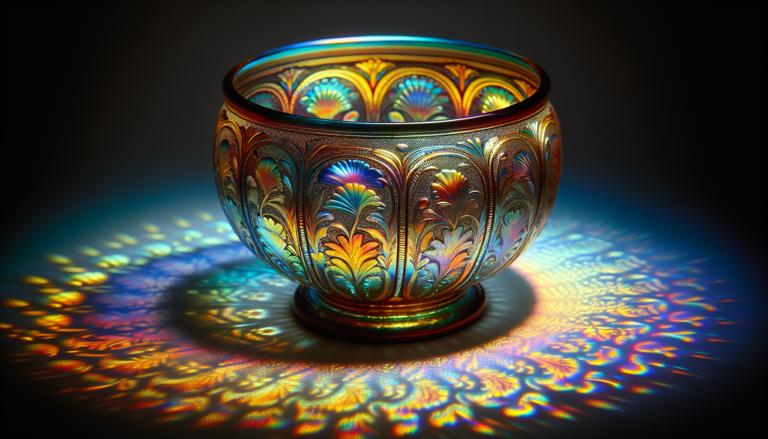Carnival glass is a type of pressed glass that originated in the early 20th century. It is well-known for its distinctive iridescent sheen, which gives it a rainbow-like appearance. This effect is achieved by applying metallic salts to the glass while it is still hot, creating a surface that reflects light in various colors.
Key points about Carnival glass:
- Carnival glass was first created around 1908 by the Fenton Art Glass Company in the United States and quickly gained popularity, being manufactured by numerous other glass makers.
- It was fashioned into various items, such as bowls, plates, vases, and figurines. Its name “Carnival Glass” originates from it being frequently given away as prizes at carnivals and fairs.
- Although it is typically known for its iridescent colors, it was produced in various hues such as marigold (golden), amethyst, blue, green, and red. Some pieces are more sought after due to their rarity and color.
- Elaborate patterns and designs, including floral motifs, geometric shapes, and animals, are often featured on Carnival glass, added using molds, which can contribute to the value of a piece.
- Today, Carnival glass is highly collectible, with the value of pieces determined by color, pattern, condition, and rarity. Early pieces and those in unique colors or patterns are the most valuable.
- While the original production of Carnival glass declined by the mid-20th century, interest has been resurgent, and some companies have produced new pieces in a similar style.
In summary, Carnival glass remains a cherished form of antique glassware, treasured for its beauty and historical significance.
